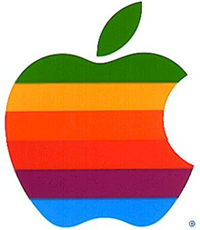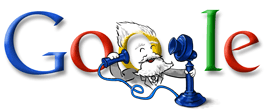 Apple’s logo can make people think more creatively than IBM’s logo, according to researchers at Duke University’s Fuqua School of Business and Canada’s University of Waterloo.
Apple’s logo can make people think more creatively than IBM’s logo, according to researchers at Duke University’s Fuqua School of Business and Canada’s University of Waterloo.
Professors Gavan Fitzsimons and Tanya Chartrand of Duke, and Grainne Fitzsimons of Waterloo, in an article scheduled for publication in the April issue of the Journal of Consumer Research, claim that a mere 30 millisecond exposure to famous brand logos can influence view behavior.
Their findings are sure to stir up controversy because they suggest that subliminal advertising, until recently regarded as a hoax, may actually have something to it.
In 1957, a market researcher named James Vicary claimed to have boosted sales of Coca Cola and popcorn in a movie theater by flashing the messages “Drink Coca Cola” and “Eat popcorn” so fast that the audience was unaware of the ads. Vicary’s reported findings have been largely dismissed, but recent research suggests he might have been on to something. Read the rest of this entry…
Posted by //
Sean
Date and Time //
Mar 13, 08 - 10:46 am
Categories //
Open Source
Software
Technology
Comments Off
Want to give the Firefox 3 beta a spin, but you don’t want to go through the tedium of backing up your profiles and personal data? Here’s an easy solution if you’re a Windows user.
The folks at PortableApps.com — all open source, all no-install, all the time — have just debuted a new build of Firefox 3 beta 4.
For those not familiar with the Portable Apps paradigm, their mission is to provide you with custom builds of the best open source applications which can run without needing to be formally installed.
They can be mounted on a USB flash drive or copied into a directory and run as-is. They also provide a handy application organizer and launcher which works the same way, and I’ve stumped for them whenever they come up with a noteworthy new edition of one of their apps.
The best thing about the portable edition of FF 3 b4 is that it runs totally separately from any other instances of Firefox in your system, including your user profiles.
Typically, whenever I tested a new build of Firefox, I had to back up my user profile just to be on the safe side. PortableApps’s Firefox uses its own separate user-profile instance, stored along with the application.
There’s a couple of downsides to this. One is that if you want to use your existing bookmarks, you need to export them from your existing instance of Firefox and re-import them.
The other is that things like password fields aren’t inherited, either, but I’ve been using the impossibly handy (and also open source) SuperGenPass to manage passwords, so having passwords saved in form fields isn’t crucial in my case
This isn’t the first beta build of Firefox that has premiered through their system, but it’s one of the first I feel wholly comfortable working with on a daily basis.
So far it’s been extremely stable, markedly faster than even the “accelerated” 2.x builds I’ve used (like Pigfoot), and racks up a good deal less CPU usage when running JavaScript applications, like many of the Ajax-based tools I use for managing web content.
I’m still getting used to the new ways things like bookmarks are handled — for one, the “Smart Bookmarks” system doesn’t particularly interest me; I don’t like it when software tries to second-guess my work habits.
But on the whole I see the finished version of FF 3 in my future — and frankly, the current beta 4 version is already a big part of my present.
Belkin’s latest power-strip adds a very smart feature for travelers: USB ports. The strip has a couple of charge-only sockets along with the three-way mains AC extenders and even comes with a mini-USB cable, obviating the need to carry chargers for most gadgets.

The $25 box also squeezes in a surge-protector for those untrustworthy hotel power outlets. Taken from the product page:
Hotel rooms and airport terminals never seem to have enough power outlets to charge all the devices today’s traveler brings along. Now you can add outlets and peace of mind on business trips and vacations with the Belkin Mini Surge Protector.
This new design features three AC outlets and two powered USB outlets – perfect for MP3 players and mobile phones.
Something to note, the USB outlets cannot be used as a USB hub and does not transmit data. The powered USB outlets on this unit are intended solely for charging devices that can be charged via a USB interface.
Check out the product page for more information. I’ve already ordered two ![]()
This is the most adorable 1 minute and 30 second video ever. Seriously. This little girl is a star and she explains the movie really well for a 3 year old.
The father of the little girl had this to say about the making of the video:
She wasn’t coached to say anything, nor was she forced to make the video. She rarely stops talking.
Believe it or not, she has the seem the movie only once, and I spread it out over 3 days so it wouldn’t be too much all at once for her.
The video was edited to make it shorter, more cohesive and hopefully funnier. I did move some of the lines around so it would make more sense.
Amazing that she can tell the story about the movie and only saw it once over a 3 day period?!?! She’ll probably grow up to be a rocket scientist or something smart like that ![]()
This is one of the greatest things I have ever seen in my life… Just further proof that beauty pageants are as retarded as the contestants. Go South Carolina…
I have watched this a few times and it just gets funnier and funnier. I am running out to the store right now to buy maps in South Africa and in Iraq.
Posted by //
Sean
Date and Time //
Mar 3, 08 - 12:01 am
Categories //
Geekery
Google
Technology
Comments Off
Alexander Graham Bell (March 3, 1847-August 2, 1922) was a Scottish scientist and inventor who immigrated to Canada.
In celebration of his birthday, Google has put up a colorful tribute logo:

I think it’s awesome how Google does these creative themed logos to help remember various people, places and things.
Today, Bell is widely considered one of the foremost developers of the telephone, together with Antonio Meucci, inventor of the first telephone prototype, and Philipp Reis.
Six years after having obtained his telephone patent, he became a naturalized citizen of the United States.
In addition to Bell’s work in telecommunications technology, he was responsible for important advances in aviation and hydrofoil technology.